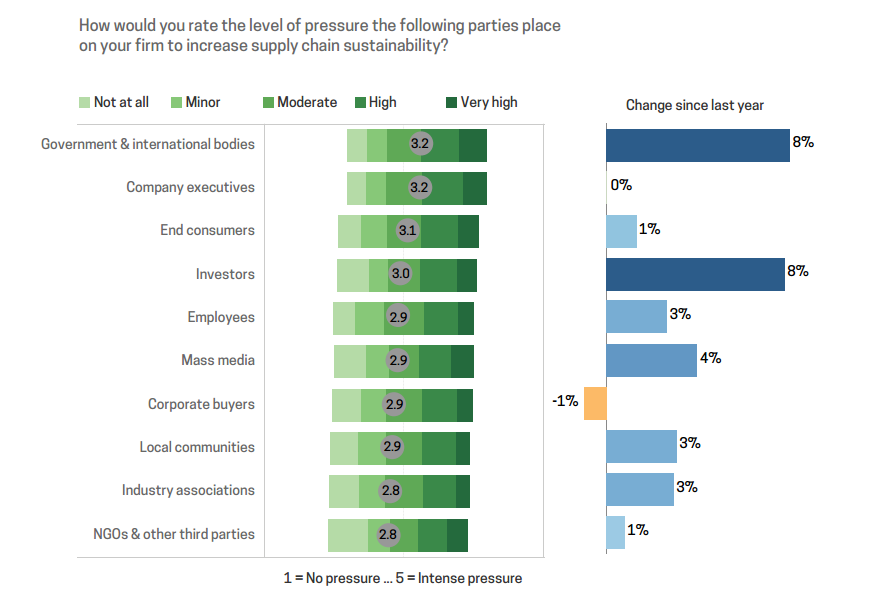Last week the Massachusetts Institute of Technology (MIT) published their report on the State of Supply Chain Sustainability 2021. It is this report MIT explores how supply chain sustainability is being implemented in global supply chains.
Supply Chain Sustainability is defined as the management of environmental and social impacts within and across networks consisting of suppliers, manufacturers, distributors, and customers in line with the UN Sustainable Development Goals. This spans every phase of the supply chain, from raw material sourcing and extraction to product use and end of product life.
The main conclusions of the State of Supply Chain Sustainability 2021 report are:
- Covid-19 did not slow the push to make supply chains more sustainable. Executives were undeterred by the crisis: 83% of the executives interviewed said that Covid‑19 has either accelerated SCS activity or, at the very least, increased awareness and brought urgency to this growing field;
- Momentum appears to come primarily from large (1,000–10,000 employees) and very large (10,000+ employees) companies;
- the pressure to support sustainability in supply chains is coming from multiple sources, both internal and external. Pressure from investors, government and international bodies grew the most of all sources (see Figure).

Real Estate Supply Chain Sustainability
Real estate as an industry is not separately mentioned in the MIT report. Real estate is incorporated in construction, retail, manufacturing and other industries. At a first glance it looks like the main findings of the report apply to the real estate industry as well, that pressure is coming from investors and governments, and larger companies are taking the lead.
There are however good reasons to research the real estate industry separately. During Covid-19 it became apparent that many buildings do not qualify as healthy buildings and that online working and shopping has created a new mindset about offices, retail and residential buildings. The industry however is not only dealing with the effects of the pandemic. The industry has other challenges too, such as: accommodating global population growth, being resilient to climate change, incorporating the UN Sustainable Development Goals (for example implementing the energy transition) and facing a technological revolution. Earlier this year the World Economic Forum summarized these challenges in their report A Framework for the Future of Real Estate as: real estate must become more livable, sustainable and affordable.
Real estate is a very fragmented industry and is often treated that way. Real estate however has a huge impact on our planet, societies and economies. From that perspective it would be interesting to research the state of supply chain sustainability in the real estate industry. To indicate: Is the supply chain sustainability of the real estate industry lower, equal or higher than other industries? What do you think?
One of the key findings from the World Economic Forum is that financial returns have overshadowed community needs and often tenant needs. Do you think that a better implementation of community needs and tenant needs can create a more sustainable real estate supply chain?
Based on the findings of these polls I shall follow up with a new blog. I have also been asked to organize inspiration meetings on how to improve the value chain of real estate and other real assets based on my research. Discussions about this topic I intend to do on the open LinkedIn Group: Future of Real Estate Investments
Photo by Cesar’s iPhoneography on Foter.com

